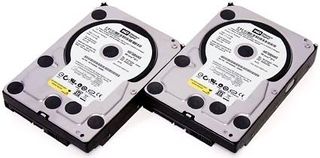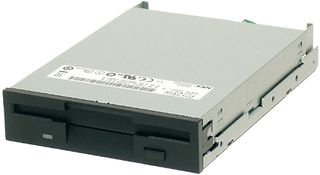System Builder Marathon: High-Cost System
Hard Drives: Two Western Digital Caviar WD7500AAKS
We've been fond of Western Digital's 750 GB Caviar WD7500AAKS ever since it made its record-breaking-performance debut last year. But this is a high-end machine, so we took things up a notch by using two of these drives in a RAID 0 setup.

Arguments aside about whether or not the use of the term "RAID" is proper for non-redundant Level 0 mode, this pair of drives, so configured, promises the highest level of transfer performance and a total capacity of 1.5 terabytes.
Optical Drive: "Samsung" SH-203B
We picked the SH-203B last year for its incredible write performance and low cost, and Toshiba Samsung Storage Technologies (TSST) has since come out with an updated SH-203N that supports LightScribe technology.

The LightScribe-enhanced version costs $3 more, which we'd gladly pay if we had to replace our SH-203B. But since both drives are otherwise similar, we simply didn't have a good excuse to upgrade from the model we already had in the lab.
The SH-203 series is a great choice for daily use thanks to its low-noise operation, high actual burn speeds that set records across the Web, rated DVD write speeds of up to 20 X, and thin SATA data cable. Optical drive performance is not part of our benchmark set, but it's nice to know that the low-priced SH-203B could potentially win.
Floppy Drive: NEC 1.44 MB
We didn't actually install a floppy into today's system, but we kept one on hand just in case we decided to try Windows XP at a later date. XP users will find these to be a requirement for loading RAID drivers during setup.

Audio: Asus SupremeFX II Riser Card
The Asus Striker II Formula supports 3-Way SLI, a configuration we thought we might like to test later. Unfortunately, installing three 8800GTX graphics cards would prevent us from using additional cards except in the top PCI Express x1 slot, which is restricted to impossibly short cards by the position of the Northbridge sink. Not even the tiny Creative X-Fi Xtreme Audio x1 fits, though Asus includes a riser card that does.
Stay on the Cutting Edge
Join the experts who read Tom's Hardware for the inside track on enthusiast PC tech news — and have for over 25 years. We'll send breaking news and in-depth reviews of CPUs, GPUs, AI, maker hardware and more straight to your inbox.

The SupremeFX II reduces noise typical of onboard audio by positioning its ADI 1988B 8-Channel HD codec away from the noisy circuits that crowd the motherboard itself. Asus further shields the card with an aluminum cover.
Current page: Hard Drives: Two Western Digital Caviar WD7500AAKS
Prev Page Graphics Cards: Two Gigabyte GeForce 8800GTX In SLI Next Page Case: Silverstone Temjin TJ09-BW-
TDL Thanks for the great article - I'm having fun building this - I do have 3 questions though - the fan duct assembly fan has 3 wire sets, 1 has the 3wire motherboard connector, the second taps into a regular power lead. The third is a single wire - the case documentation does not describe that one - what is that little single lead for? Also the motherboard sound card has some connectors on it - I assume one is for the case headphone/mic lead? Third, should teflon tape be used in the dual radiator threads if not how tight is tight enough for the O-rings? Thanks great article!Reply -
Dax3000 Hi Thanks For The Great Article - I Am Also Building A System With A Few Modifications I Loved Asus Boards But Can Never Seem To Overclock Them At All So I Am Going With A EVGA 780i FTW when they come out, THat Processor IS Sweet But No Way CAn I JUstify PAying $1060 or more here in canada for 1 Pc Component when i already own three computers, I was thinking maybe a Q6850 when they come out, i have changed the middle fan in my case already and i am just waiting on my 120 rad to get here as i already have the other parts from another computer i built that i couldn't use so that saved me a few dollars:) and i can't find that power supply anywhere so i am gonna do with a X3 1000 watt from ultra i hope it's good enough. and since i am not a really good overclocker no point in risking a high end system by messing around with 2 expensive graphics cards will 2 9800GTX+ work for me ? and omost importantly after my system is finished and filled how do i top it up if it needs more water do i have to take the top rad down to fill it everytime or can i just add water in to the same rad. thanks alot of your help and keep up the great work.Reply -
DaveCharleson I've been installing and have three questions. First, there seems to be no pump in this system - have I just missed something?Reply
Second, the twin fan radiator seems to draw the air from inside the case up through the radiator and then out the top of the case. Wouldn't you want to draw cooler air from the outside past the radiator?
Third, I don't see any connection to the video card although the 880GTX card is built for water cooling. Wouldn't you want to include this in the loop?
This is my first build with water cooling so sorry if the questions belie this. -
jimwalk The Arctic Silver instructions for applying to Intel Quad Core CPU W/Heatspreader are at http://www.arcticsilver.com/pdf/appinstruct/as5/ins_as5_intel_quad_wcap.pdfReply
Most Popular


